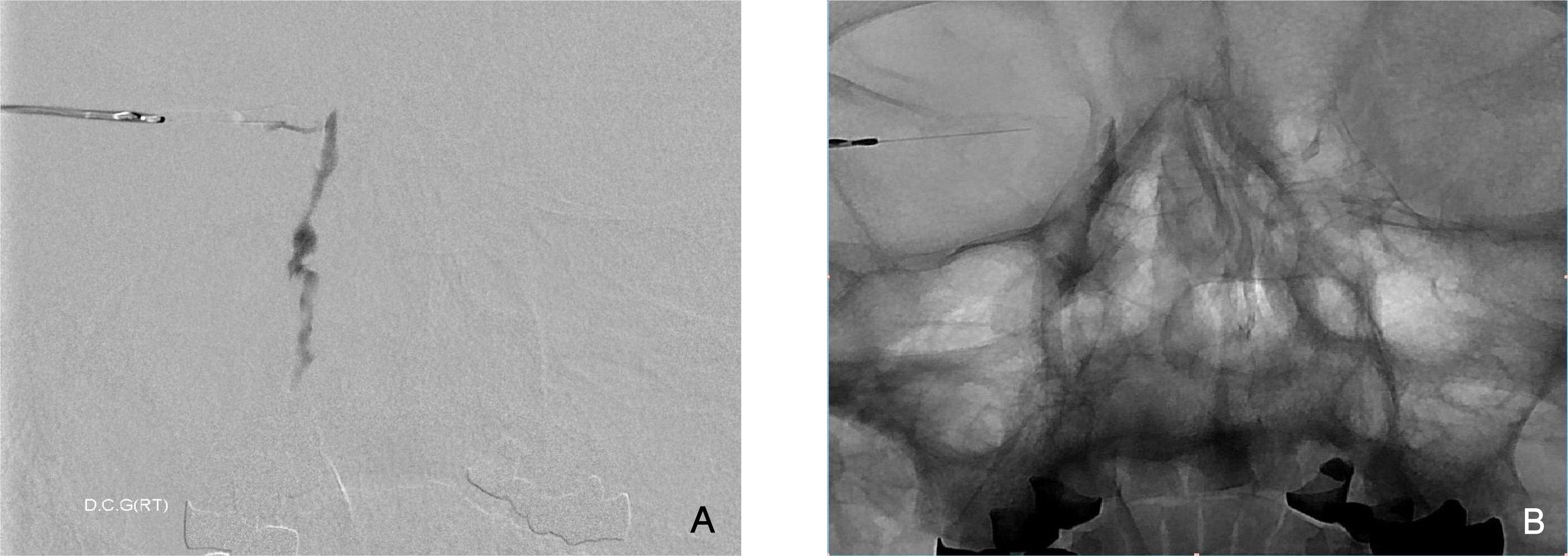Result of Silicone Tube Intubation in Patients with Epiphora Who Showing Normal Finding in Dacryocystography
- Affiliations
-
- 1Department of Ophthalmology, Chonbuk National University, Medical School, Jeonju, Korea. ahnmin@chonbuk.ac.kr
- KMID: 2211698
- DOI: http://doi.org/10.3341/jkos.2008.49.5.706
Abstract
-
PURPOSE: To Compare treatment results on silicone tube insertion according to the region and severity of resistance in lacrimal probing for functional nasolacrimal duct obstruction patients who complained of epiphora but are shown to be normal in lacrimal syringing and dacryocystography.
METHODS
A retrospective study was conducted with 40 subjects (42 eyes) who had silicone tube insertion because of functional nasolacrimal duct obstruction. A comparison was made of post-operational patient satisfaction by grading (0~3) according to the region and the severity of resistance and whether the resistance region was singular or multiple resistance regions were found on probing. Success was defined as a grade of more than one point.
RESULTS
Two eyes had no resistance regions, 28 eyes had one resistance region, and 12 eyes had more than two resistance regions on lacrimal probing. There was no statistical significance in the ranking of post-operative satisfaction among theses groups. There was also no difference among the groups for post-operative satisfaction according to obstruction site.
CONCLUSIONS
Most functional nasolacrimal duct obstruction patients showed partial obstruction of the nasolacrimal duct on probing. Since functional nasolacrimal duct obstruction is not possible, we must treat patients for partial nasolacrimal duct obstruction, for wihch silicone tube insertion is thought to be effective.
MeSH Terms
Figure
Cited by 5 articles
-
Comparison of Dacryocystographic Results Before and After Silicone Intubation in Incomplete Nasolacrimal Duct Obstruction
Jin Gu Jeong, Min Ahn
J Korean Ophthalmol Soc. 2011;52(1):1-6. doi: 10.3341/jkos.2011.52.1.1.Factors Affecting the Long-term Outcome of Silicone Tube Intubation in Patients With Nasolacrimal Duct Obstruction
Jong-Seo Park, Sung-Woo Ha, Helen Lew
J Korean Ophthalmol Soc. 2011;52(2):129-135. doi: 10.3341/jkos.2011.52.2.129.Surgical Outcomes of Endonasal Dacryocystorhinostomy According to the Level of Obstruction in Dacryocystography
Kyoung Hwa Bae, Nam Chun Cho, Min Ahn
J Korean Ophthalmol Soc. 2018;59(4):301-306. doi: 10.3341/jkos.2018.59.4.301.Comparison of Lacrimal Scintigraphy and Fluorescein Dye Disappearance Test in Functional Blockage of Lacrimal System
Kwang Sic Joo, Jeong Kyu Lee
J Korean Ophthalmol Soc. 2011;52(9):1013-1018. doi: 10.3341/jkos.2011.52.9.1013.Dacryocystographic Findings in Unilateral Epiphora with Patent Lacrimal Drainage System
Tae Hyup Kim, Jung Hye Lee, Jung Hyun Ahn, Jung Hoon Kim, Yoon Duck Kim, Kyung In Woo
J Korean Ophthalmol Soc. 2013;54(6):839-844. doi: 10.3341/jkos.2013.54.6.839.
Reference
-
References
1. Jones LT. An anatomical approach to problems of the eyelids and lacrimal apparatus. Arch Ophthalmol. 1961; 66:111–24.
Article2. Ewing AE. Roentgen ray demonstration of the lacrimal abscess cavity. Am J Opthalomol. 1909; 26:1–4.3. Milder B, Demorest BH. Dacryocystography, 1. the normal apparatus. AMA Arch Ophthalmol. 1954; 51:180–95.4. Nixon J, Birchall IW, Virjee J. The role of dacryocystography in the management of patient with epiphora. Br J Radiol. 1990; 63:337–9.5. Campbell W. The radiology of the lacrimal system. Br J Radiol. 1964; 37:1–26.
Article6. Suh TH, Chang HR. The clinical evaluation of dacryocystography in patients with epiphora. J Korean Ophthalmol Soc. 1995; 36:1842–5.7. Sohn HY, Hur J, Chung EH, Won IG. Clinical observation on silicone intubation in obstruction of lacrimal drainage system. J Korean Ophthalmol Soc. 1990; 31:135–40.8. Huh D, Son MG, Kim YD. Silicone intubation for functional nasolacrimal duct obstruction. J Korean Ophthalmol Soc. 2000; 41:2303–7.9. Angrist RC, Dortzbach RK. Silicone intubation for partial and total nasolacrimal duct obstruction in adults. Ophthalmic Plast Reconstr Surg. 1985; 1:51–4.
Article10. Chung WS, Park NG. Functional obstruction of the lacrimal drainage system. J Korean Ophthalmol Soc. 1995; 36:1435–8.11. Anderson RL, Edwards JJ. Indications, complications and results with silicone stents. Ophthalmol. 1979; 86:1474–87.
Article12. Kim HD, Jeong SK. Silicone tube intubation in acquired nasolacrimal duct obstruction. J Korean Ophthalmol Soc. 2000; 41:327–31.13. Park HJ, Hwang WS. Clinical results of silicone intubation for epiphora patients. J Korean Ophthalmol Soc. 2000; 41:2327–31.14. Shin CH, Woo KI, Chang HR. Evaluation of the functional nasolacrimal duct obstruction with digital subtraction dacryocystography. J Korean Ophthalmol Soc. 2003; 44:529–33.
- Full Text Links
- Actions
-
Cited
- CITED
-
- Close
- Share
- Similar articles
-
- The Comparison of Punctoplasty and Silicone Tube Intubation in Patients with Punctal Obstruction
- Success Rate of Silicone Intubation Between Nasolacrimal Duct Obstruction and Stenosis According to Dacryocystography
- Results of Silicone Tube Intubation in Patients with Common Canalicular Obstruction in Dacryocystography
- Silicone Intubation and Dacryocystographic Finding in Incomplete Nasolacrimal Duct Obstruction
- Silicone Tube Intubation in Acquired Nasolacrimal Duct Obstruction


